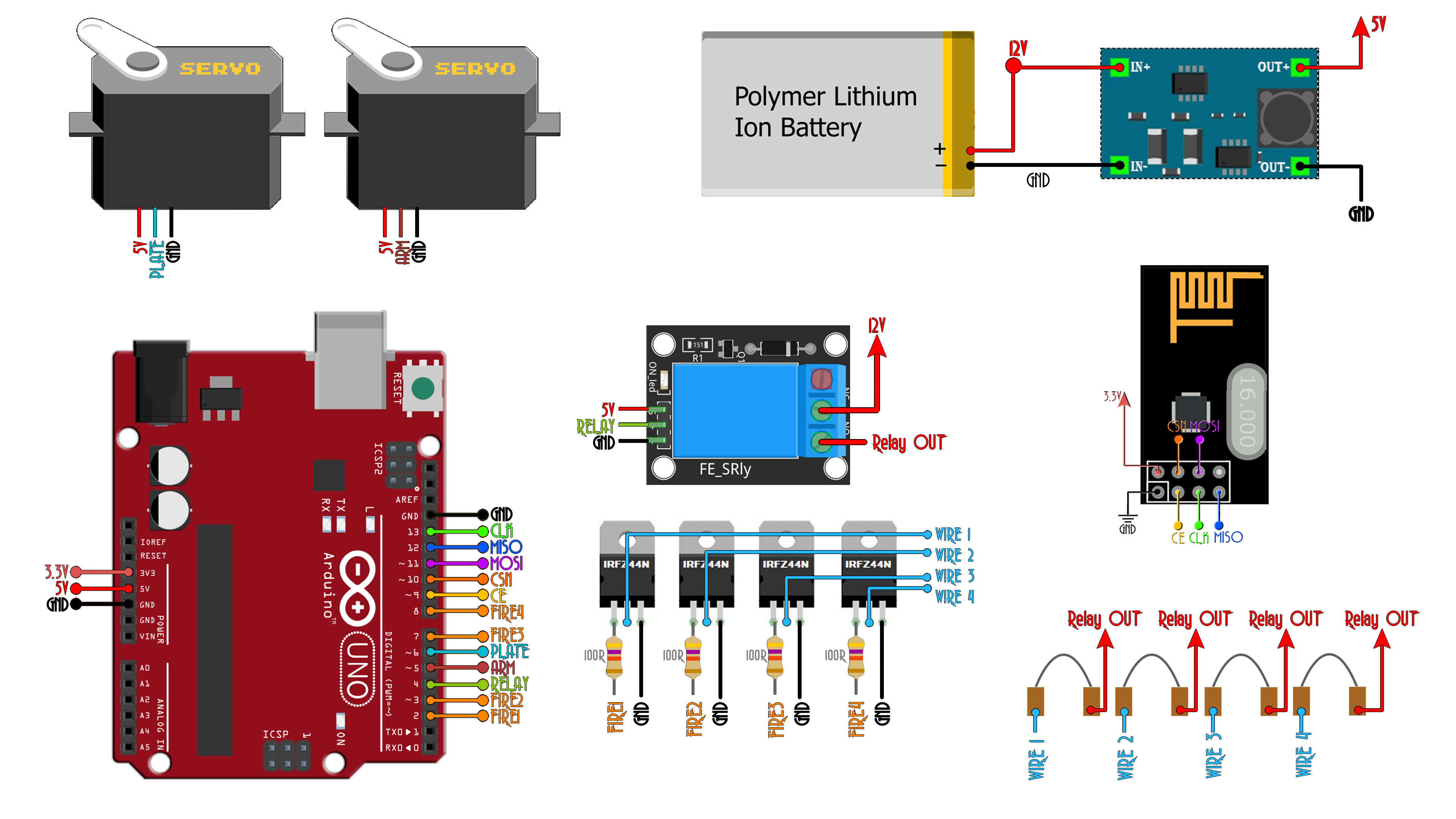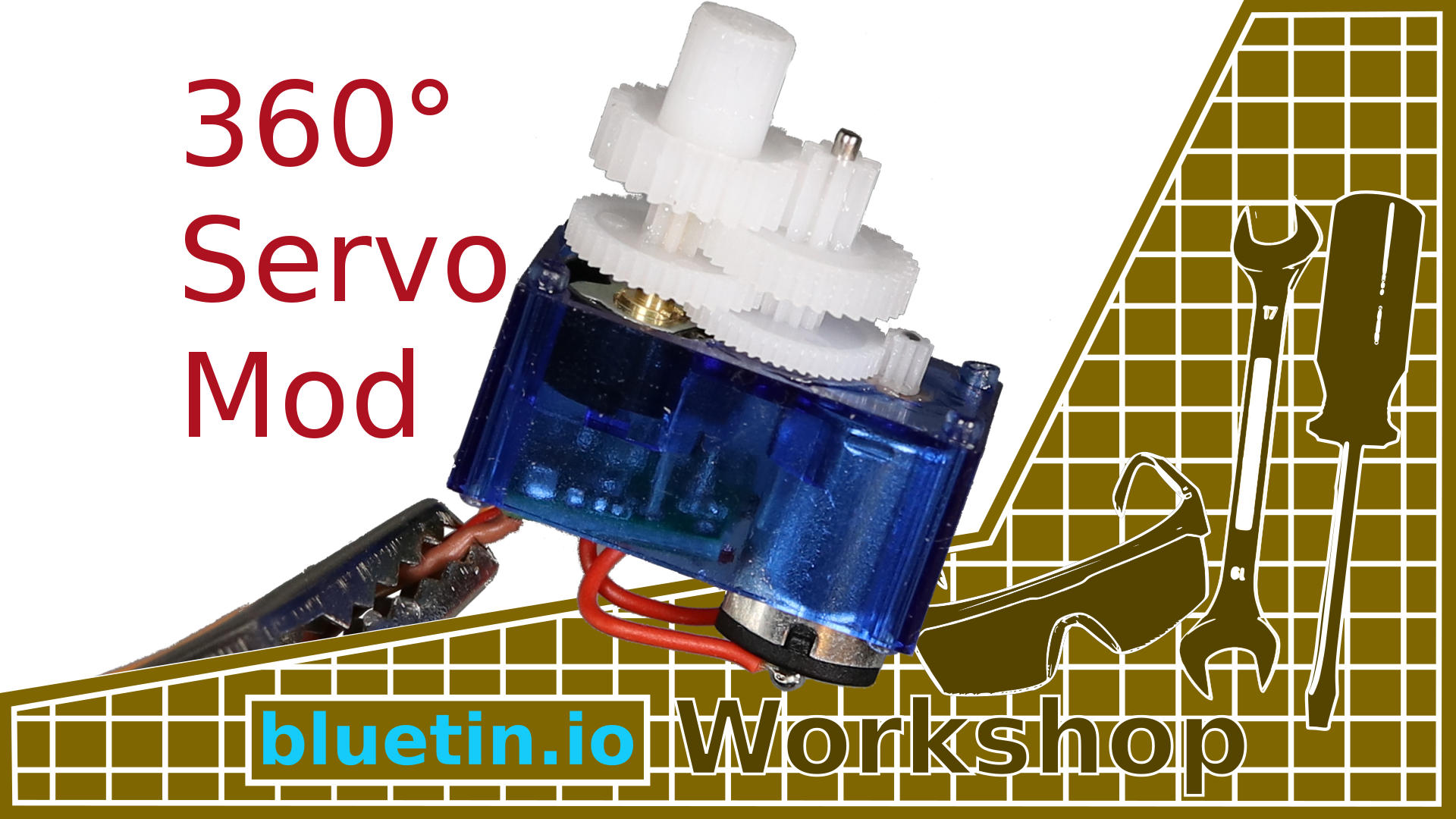
- #CONTINUOUS SERVO MOTOR ARDUINO CODE HOW TO#
- #CONTINUOUS SERVO MOTOR ARDUINO CODE SERIES#
In order to send this pulsed signal, we need to configure the micro:bit properly. Now let’s see how that 1.2 ms setting would look in pulse form. For example: setting the pulse high for 1.2 ms will run the servo at 60% speed in the clockwise direction. You can also set anything in between to get less than 100% speed.
 If the pulse is high or “ON” for 2.0 ms during those 20 ms then the Servo will run at 100% speed in the counterclockwise direction. If the pulse is high or “ON” for 1.5 ms during those 20 ms then the Servo is considered stopped. If the pulse is high or “ON” for 1.0 ms during those 20 ms then the Servo will run at 100% speed in the clockwise direction. If you break it down another way, one pulse is sent every 1/50 th of a second which equals 20 milliseconds (ms for short).Ĭontinuous servo motors also operate with the following rules. A pulsed signal looks like this:ĥ0 Hz means one pulse happens 50 times every second. This is a standard for nearly all DC servo motors. To operate a servo we must send it a 50 Hertz (Hz) pulsed signal. This signal controls whether the servo is rotating, how fast it is rotating, and which direction it is turning. This signal line is where the magic happens when controlling a servo. The signal line is connected to one of the Input / Output attachment points on the micro:bit. It is important that the two ground lines are connected so that the servo has a reference to use for the Signal line. The ground line must be connected to the micro:bit ground. The power line should be connected directly to the DC power source. The FEETECH FS90R was designed to take either 5V or 3V power sources. You will want to check what voltage your peripheral is rated for before applying power. The power line can accept a DC power source. Servos generally accept 3 input lines: power, ground, and signal. They operate under some basic servo principles. They can provide all kinds of functionality from turning wheels to running pulleys and rotating objects.Īll the examples provided below will be done using the FEETECH FS90R Continuous Rotation Servo but will work with nearly any standard RC continuous rotation servo.Ĭontinuous rotation servos are nearly all identical.
If the pulse is high or “ON” for 2.0 ms during those 20 ms then the Servo will run at 100% speed in the counterclockwise direction. If the pulse is high or “ON” for 1.5 ms during those 20 ms then the Servo is considered stopped. If the pulse is high or “ON” for 1.0 ms during those 20 ms then the Servo will run at 100% speed in the clockwise direction. If you break it down another way, one pulse is sent every 1/50 th of a second which equals 20 milliseconds (ms for short).Ĭontinuous servo motors also operate with the following rules. A pulsed signal looks like this:ĥ0 Hz means one pulse happens 50 times every second. This is a standard for nearly all DC servo motors. To operate a servo we must send it a 50 Hertz (Hz) pulsed signal. This signal controls whether the servo is rotating, how fast it is rotating, and which direction it is turning. This signal line is where the magic happens when controlling a servo. The signal line is connected to one of the Input / Output attachment points on the micro:bit. It is important that the two ground lines are connected so that the servo has a reference to use for the Signal line. The ground line must be connected to the micro:bit ground. The power line should be connected directly to the DC power source. The FEETECH FS90R was designed to take either 5V or 3V power sources. You will want to check what voltage your peripheral is rated for before applying power. The power line can accept a DC power source. Servos generally accept 3 input lines: power, ground, and signal. They operate under some basic servo principles. They can provide all kinds of functionality from turning wheels to running pulleys and rotating objects.Īll the examples provided below will be done using the FEETECH FS90R Continuous Rotation Servo but will work with nearly any standard RC continuous rotation servo.Ĭontinuous rotation servos are nearly all identical. 
These tiny motors can run on small DC power sources. For now, continuous rotation servos, you guessed it, can rotate continuously in either direction. We are going to cover positional rotation servos in our next article. There are two primary types of servo motors that can be used with the micro:bit: continuous rotation servos and positional rotation servos. This first installment is all about continuous rotation servo motors.

We hope to make your adventures with Python and the micro:bit just a little bit more enjoyable.Ĭheck out the 60-second demo video here:
#CONTINUOUS SERVO MOTOR ARDUINO CODE HOW TO#
We will explain the peripheral and its uses, describe how to use it with the micro:bit, and provide example Python code to operate it.
#CONTINUOUS SERVO MOTOR ARDUINO CODE SERIES#
This is a new series designed to educate micro:bit users on different peripherals. Welcome to our first edition of the micro:bit peripherals in Python series.







 0 kommentar(er)
0 kommentar(er)
